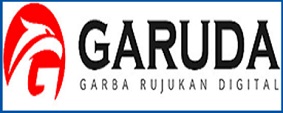PELATIHAN PEMBELAJARAN DIFERENSIASI UNTUK MEMENUHI KEBUTUHAN BELAJAR SISWA SEKOLAH DASAR DALAM MERDEKA BELAJAR
Abstract
Keywords
Full Text:
PDFReferences
MAGISTRA: Media Pengembangan Ilmu Pendidikan Dasar Dan Keislaman, 10(1). https://doi.org/10.31942/mgs.v10i1.2714
Herwina, W. (2021). Optimizing Student Needs and Learning Outcomes With. PERSPEKTIF Ilmu Pendidikan, 35(2).
Ismajli, H., & Imami-Morina, I. (2018). Differentiated instruction: Understanding and applying interactive strategies to meet the needs of all the students. International Journal of Instruction, 11(3), 207–218.
https://doi.org/10.12973/iji.2018.11315a
Jenyana, I. M. R. (2022). Pembelajaran yang Berdiferensiasi. Jurnal Inovasi, 8(17), 31–37. London, R. F. (2022). Using Differentiated Learning Activities to Improve Student’s Grammatical Competence. East Asian Journal of Multidisciplinary Research, 1(6), 1017–1032. https://doi.org/10.55927/eajmr.v1i6.696
Morgan, H. (2014). Maximizing Student Success with Differentiated Learning. The Clearing House: A Journal of Educational Strategies, Issues and Ideas, 87(1), 34–38. https://doi.org/10.1080/00098655.2013.832130 Puspitarini, Y. D., & Hanif, M. (2019). Using Learning Media to Increase Learning Motivation in Elementary School. Anatolian Journal of Education, 4(2), 53–60. https://doi.org/10.29333/aje.2019.426a
Putri Ningrat, S., Tegeh, I. M., & Sumantri, M. (2018). Kontribusi Gaya Belajar Dan Motivasi Belajar Terhadap Hasil Belajar Bahasa Indonesia. Jurnal Ilmiah Sekolah Dasar, 2(3), 257. https://doi.org/10.23887/jisd.v2i3.16140
Shah, K., Ahmed, J., Shenoy, N., & N, S. (2013). How different are students and their learning styles? International Journal of Research in Medical Sciences, 1(3), 1.
https://doi.org/10.5455/2320- 6012.ijrms20130808
Shamsuddin, N., & Kaur, J. (2020). Students’ learning style and its effect on blended learning, does it matter? International Journal of Evaluation and Research in Education, 9(1), 195–
https://doi.org/10.11591/ijere.v9i1.20422
Smith, P., & Dalton, J. (2005). Getting to grips with. In NCVER. Australian Goverment.
Sunawan, S., Amin, Z. N., Sumintono, B., Hafina, A., & Kholili, M. I. (2021). The differences of students’ burnout from level of education and duration daily online learning during COVID-19 pandemics. Proceedings of the
International Conference on Industrial Engineering and Operations Management, 3723– 3729.
Utomo, K., Soegeng, A. Y., Purnamasari, I., & Amaruddin, H. (2021). Pemecahan Masalah Kesulitan Belajar Siswa pada Masa Pandemi Covid19. MIMBAR PGSD Undiksha, 9(1), 1. https://doi.org/10.23887/jjpgsd.v9i1.29923
Variacion, D. A., Salic-Hairulla, M., & Bagaloyos, J. (2021). Development of differentiated activities in teaching science: Educators’ evaluation and selfreflection on differentiation and flexible learning. Journal of Physics: Conference Series, 1835(1). https://doi.org/10.1088/1742- 6596/1835/1/012091
Widayanti, F. D. (2013). Pentingnya Mengatahui Gaya Belajar Siswa dalam Kegiatan Pembelajaran di Kelas. Erudio Journal of Educational Innovation, 2(1), 7–21.
Wiedarti, P. (2018). Pentingnya Memahami Gaya Belajar. In Seri Manual Gls Pentingnya Memahami Gaya Belajar. Direktorat Jenderal Pendidikan Dasar dan Menengah Kementrian Pendidikan dan kebudayaan.
Zagoto, M. M., Yarni, N., & Dakhi, O. (2019). Perbedaan Individu Dari Gaya Belajarnya Serta Implikasinya Dalam Pembelajaran. Jurnal Review Pendidikan Dan Pengajaran, 2(2), 259–
https://doi.org/10.31004/jrpp.v2i2.481
DOI: https://doi.org/10.31326/jmp-ikp.v7i1.2002
Refbacks
- There are currently no refbacks.

This work is licensed under a Creative Commons Attribution 4.0 International License.






